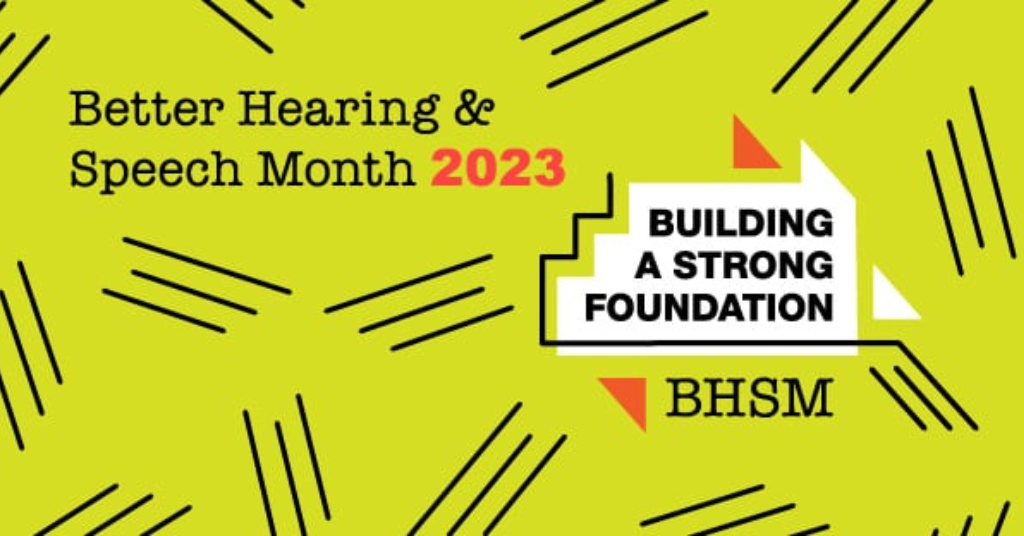
Jewelry line aims to inspire confidence for those with hearing loss
April 25, 2017
24 hours of traveling with hearing loss
April 27, 2017How to recognise and protect yourself from dangerous sounds

What is the loudest noise in your daily life? Could that noise cause you hearing loss?
Today is International Noise Awareness Day, so along with thinking about these potential auditory dangers, we also want to explain how you can be aware how loud a noise is.
When thinking about noise it is easy to recognize the loud sounds that may seem the most obvious to us. For example: music blaring through headphones, tools running at a construction site, or a honk from a car. But there are hundreds of daily activities that can create loud, and potentially dangerous noise that you may not think to be aware of.
How loud does a typical day sound?
Recently, Phonak hEARo Angie went out and measured daily sounds in her life. On average, all the noises she experienced through the day measured at 86dB – loud enough to cause permanent hearing loss.
According to the National Institute for Occupational Safety and Health, the maximum exposure time at 85 dBA is eight hours, so the daily noises in Angie’s life won’t cause immediate loss. But if she were to be exposed to 110 dBA, it would only take one minute and 29 seconds for hearing damage to occur. (The loudest sound in Angie’s day was the traffic noise when she was the car with the windows open, which registered 99dB).
How can you find out how loud a noise is?
Technology makes it easy to find out how loud the noise around you is through sound meter apps. In addition to these apps, there are resources to track how loud cities are.
Angie used a sound meter app called Decibel 10 when tracking the sound levels throughout her day.
If you don’t want to track daily noises in your life, you can still get a general idea from other resources.
For example, the U.S. Bureau of Transportation Services has recently released a National Transportation Noise Map, which shows information about how loud a certain area is based on transportation- related noise. The data shows that if you live in a densely populated city or near an airport you are going to be exposed to more noise. It is crucial to be aware of noise in your environment, especially in populated cities. As the population grows there will be more noise and protecting your hearing will be essential to saving your hearing.
“…if you live in a densely populated city or near an airport you are going to be exposed to more noise.”
It is also important to understand how loud common sounds are in general. There are various resources to find this out, including the following list from The Center for Hearing and Communication.
Noise level of common sounds
Fireworks 162 dB
Airplane taking off 140 dB
Auto Stereo 125 dB
Rock Concert 110-120 dB
Motorcycle 95-110 dB
Heavy traffic/noisy restaurant 85 dB
Alarm Clock 65-80 dB
Washing Machine 50-75 dB
Quiet Office 40dB
How can you protect your hearing from everyday noise?
Protecting your hearing is important to prevent hearing loss, or prevent current hearing loss from becoming worse. It is the small changes that make a difference when protecting your hearing and pay off in the long run.
For example:
- Wear noise-canceling headphones. If you are going into a noisy place such as a loud bus or an airplane, think about wearing noise cancelling headphones, so you can listen to your music at a normal volume level.
- Have hearing protection on hand. Carry an extra pair of earplugs with you for unexpected noisy situations.
- Practice the 60/60 rule. Keep in mind the 60/60 rule when using a device with headphones: 60 percent volume while listening to music with headphones for 60 minutes a day is the safe amount of listening time. This rule also applies if you are streaming music through your hearing aids.
Learn more about noise awareness here and spread awareness about noise by recognising a moment of silence from 2:15-2:16pm, for International Noise Awareness Day.
International Noise Awareness Day was founded in 1996 by the Center for Hearing and Communication to encourage people to take action against loud noise where they work live and play.



